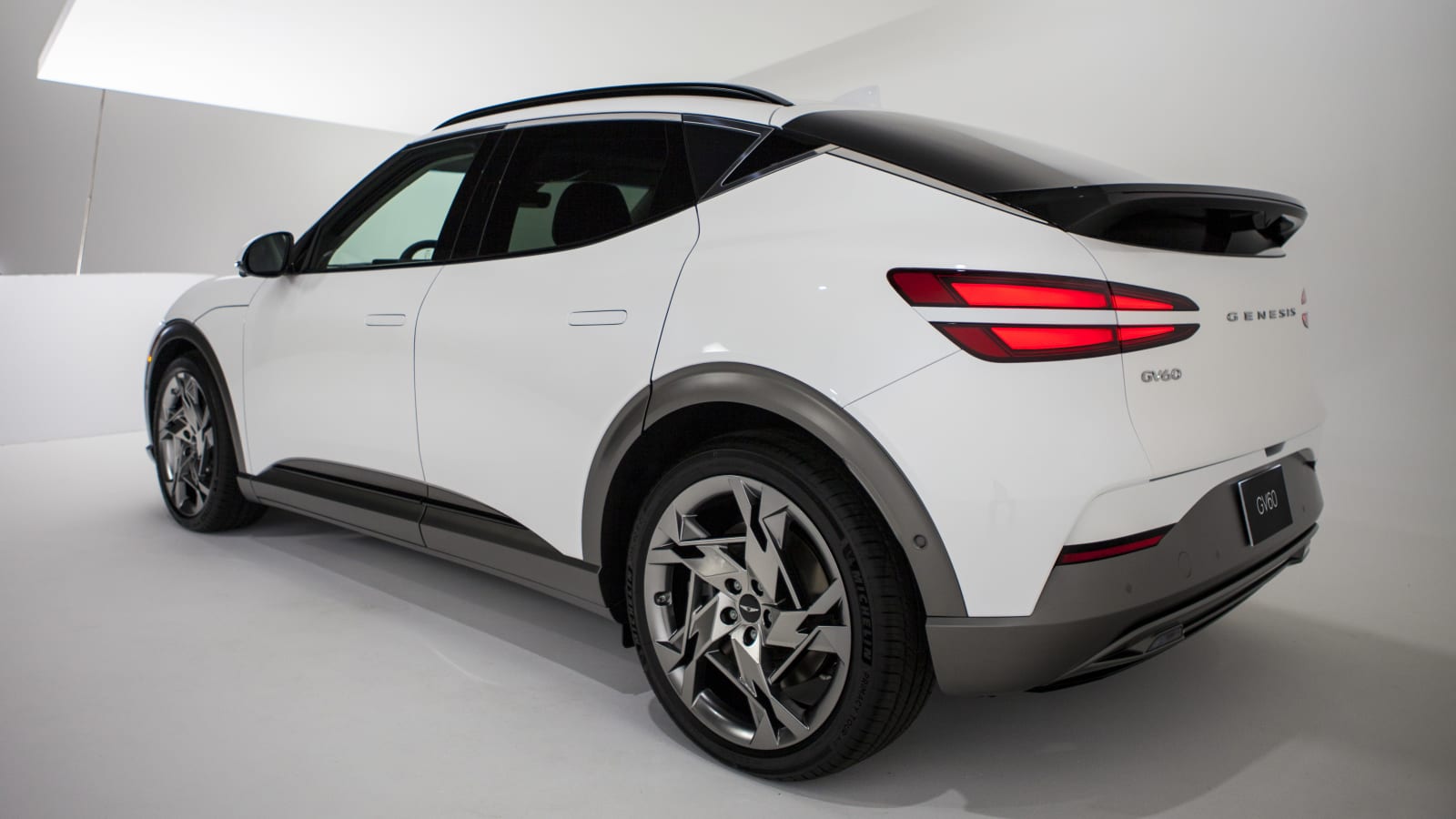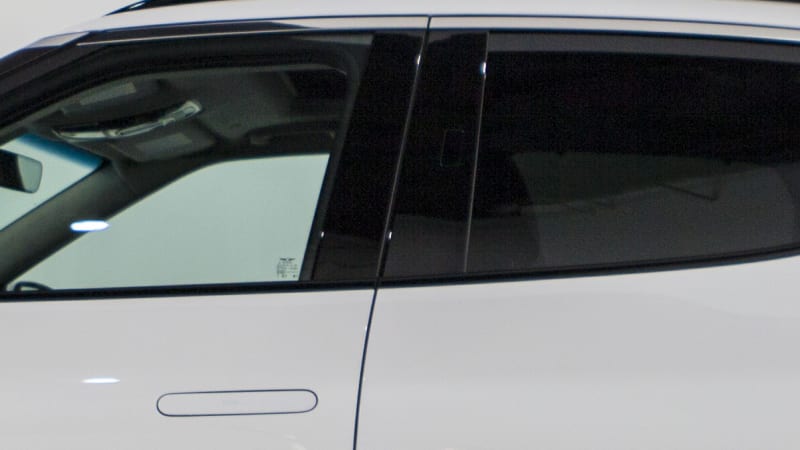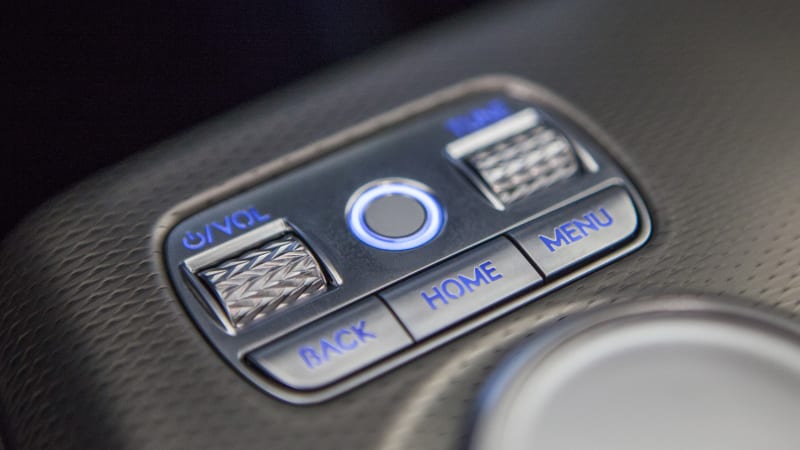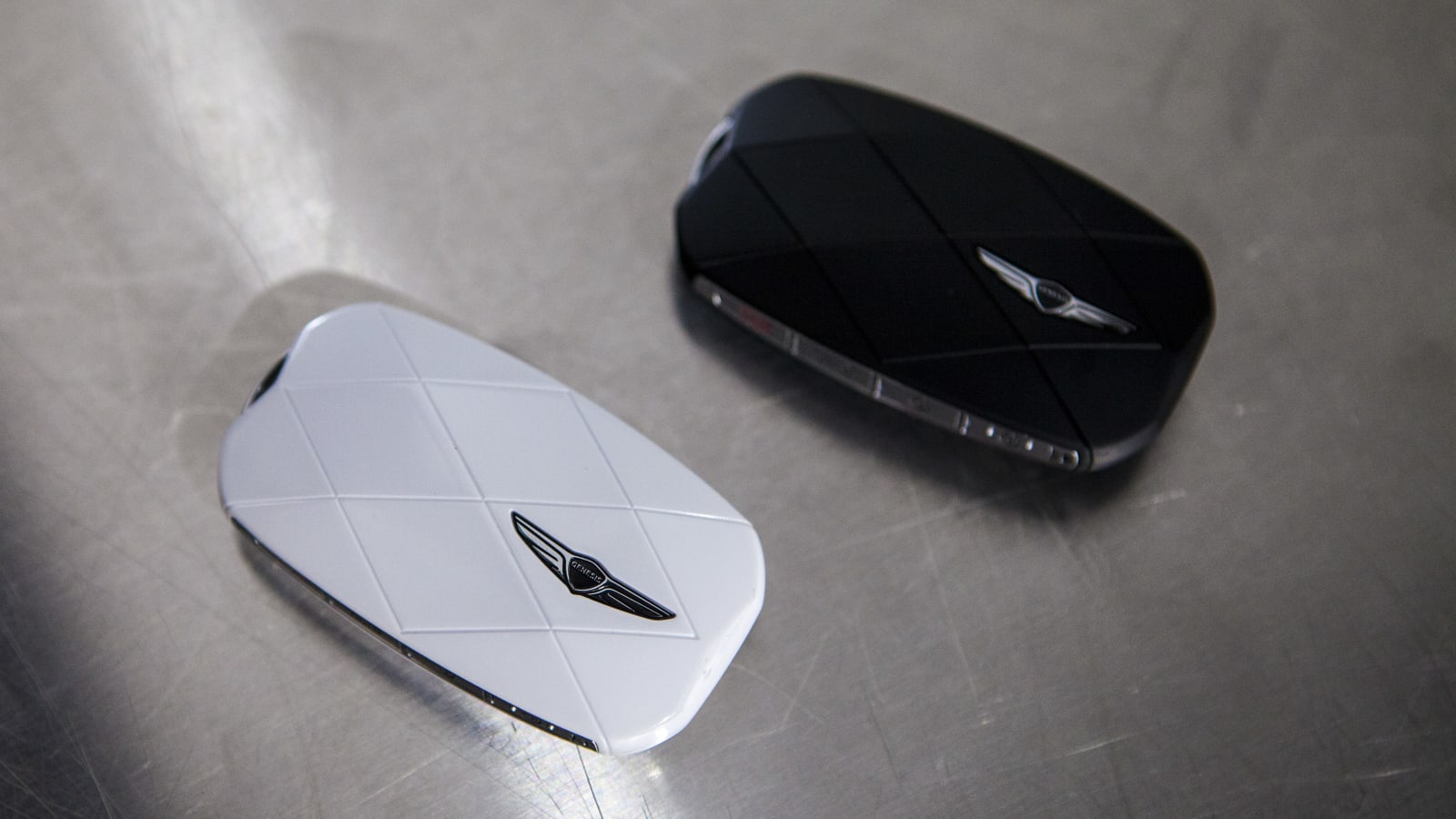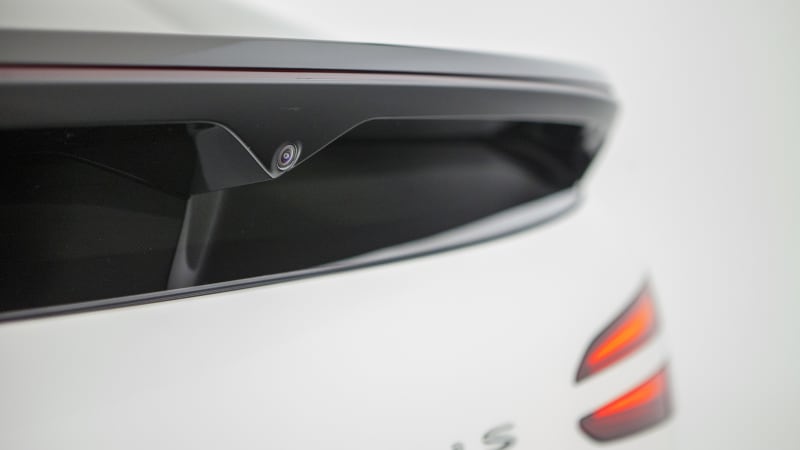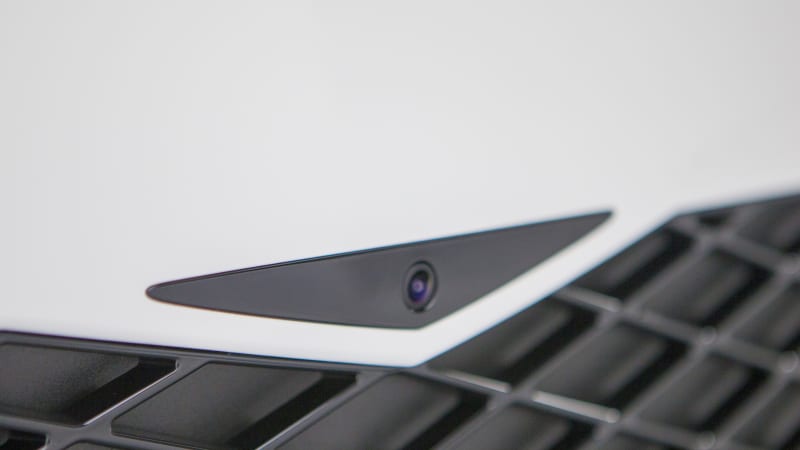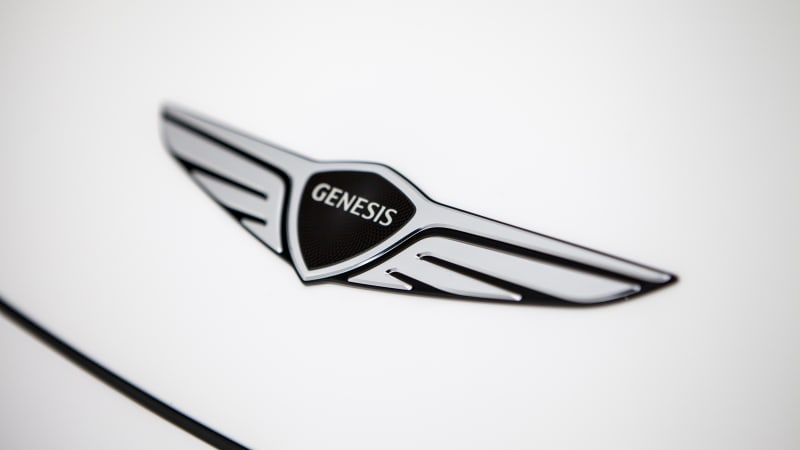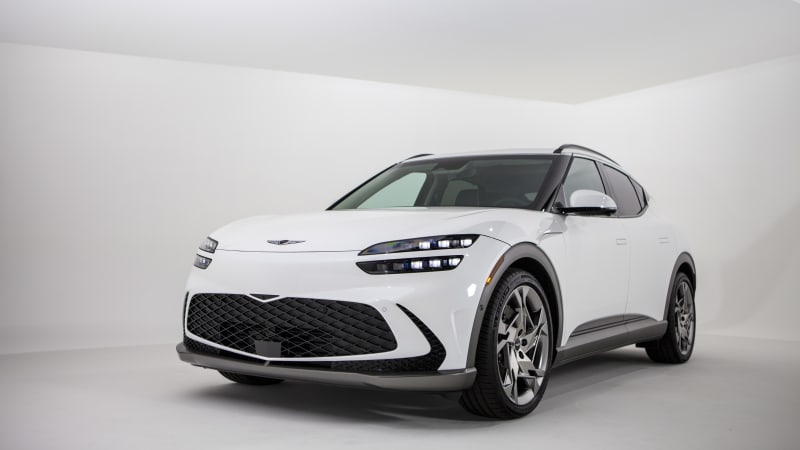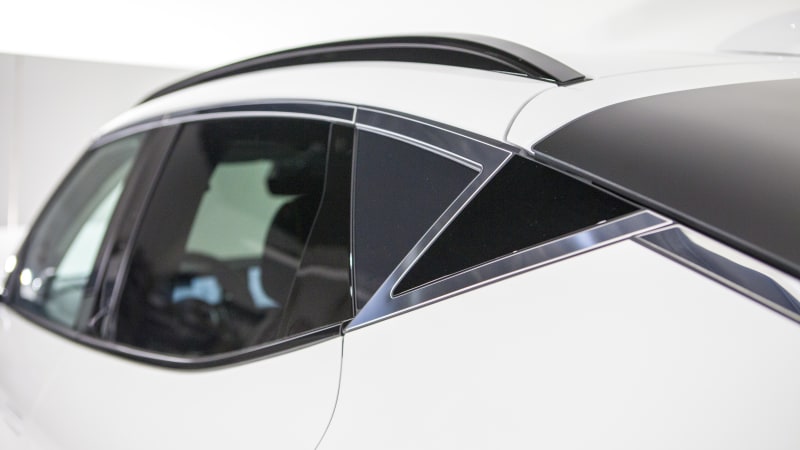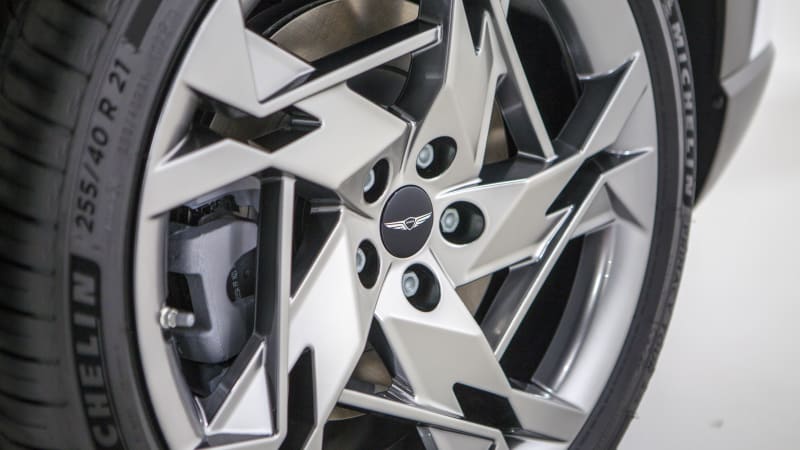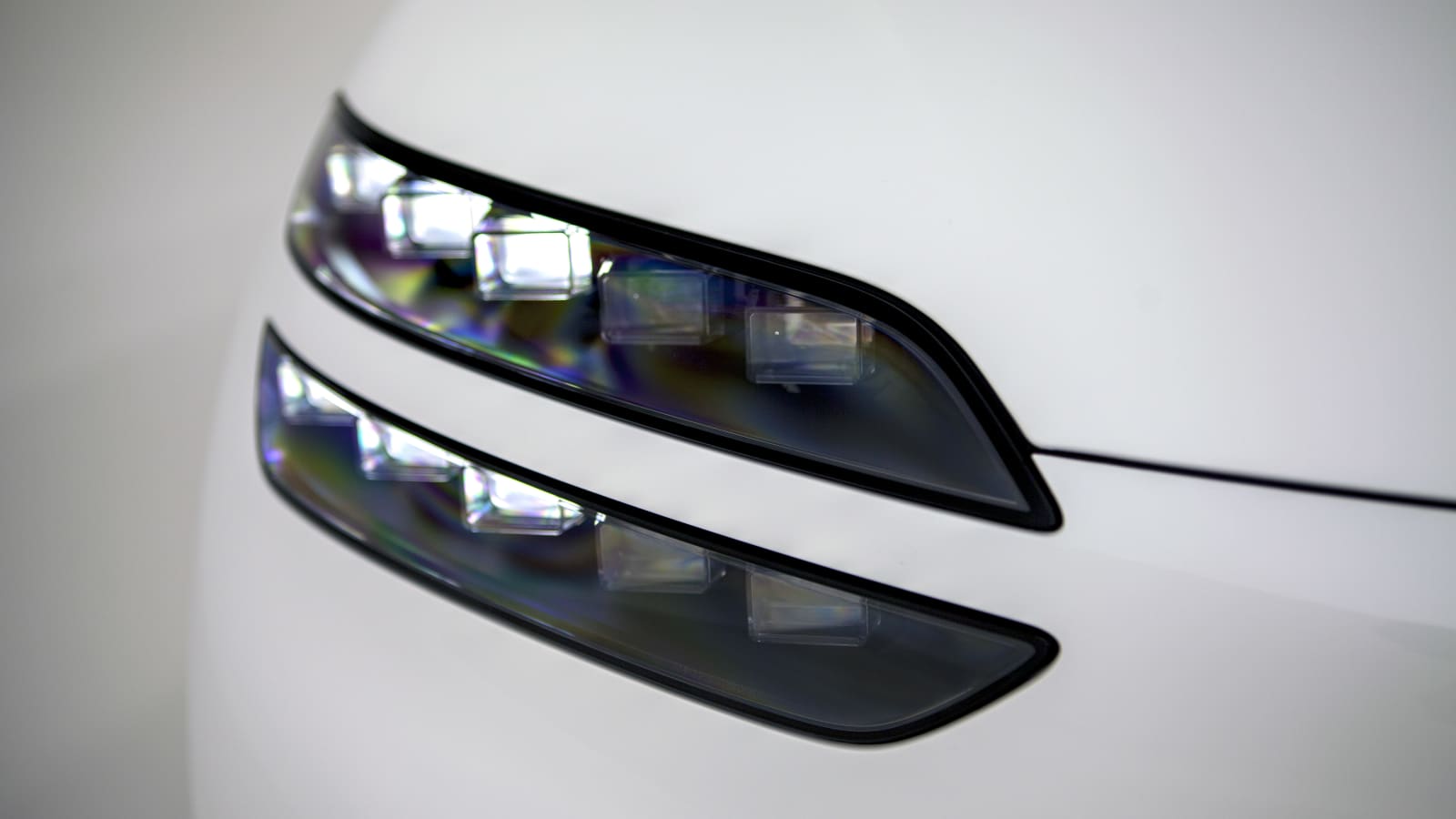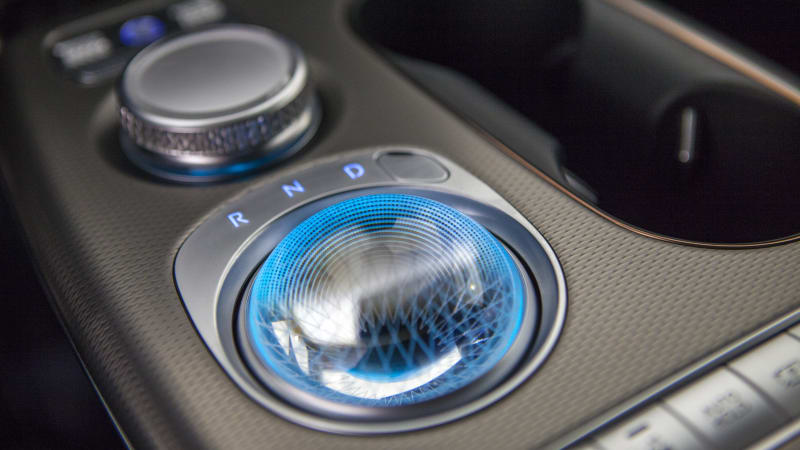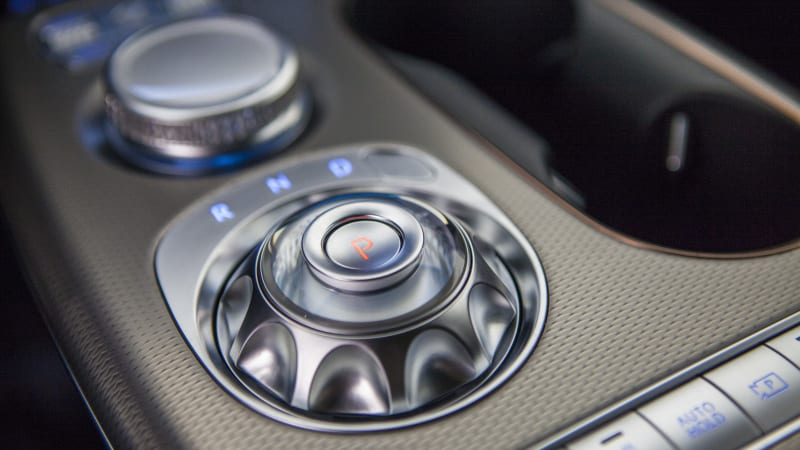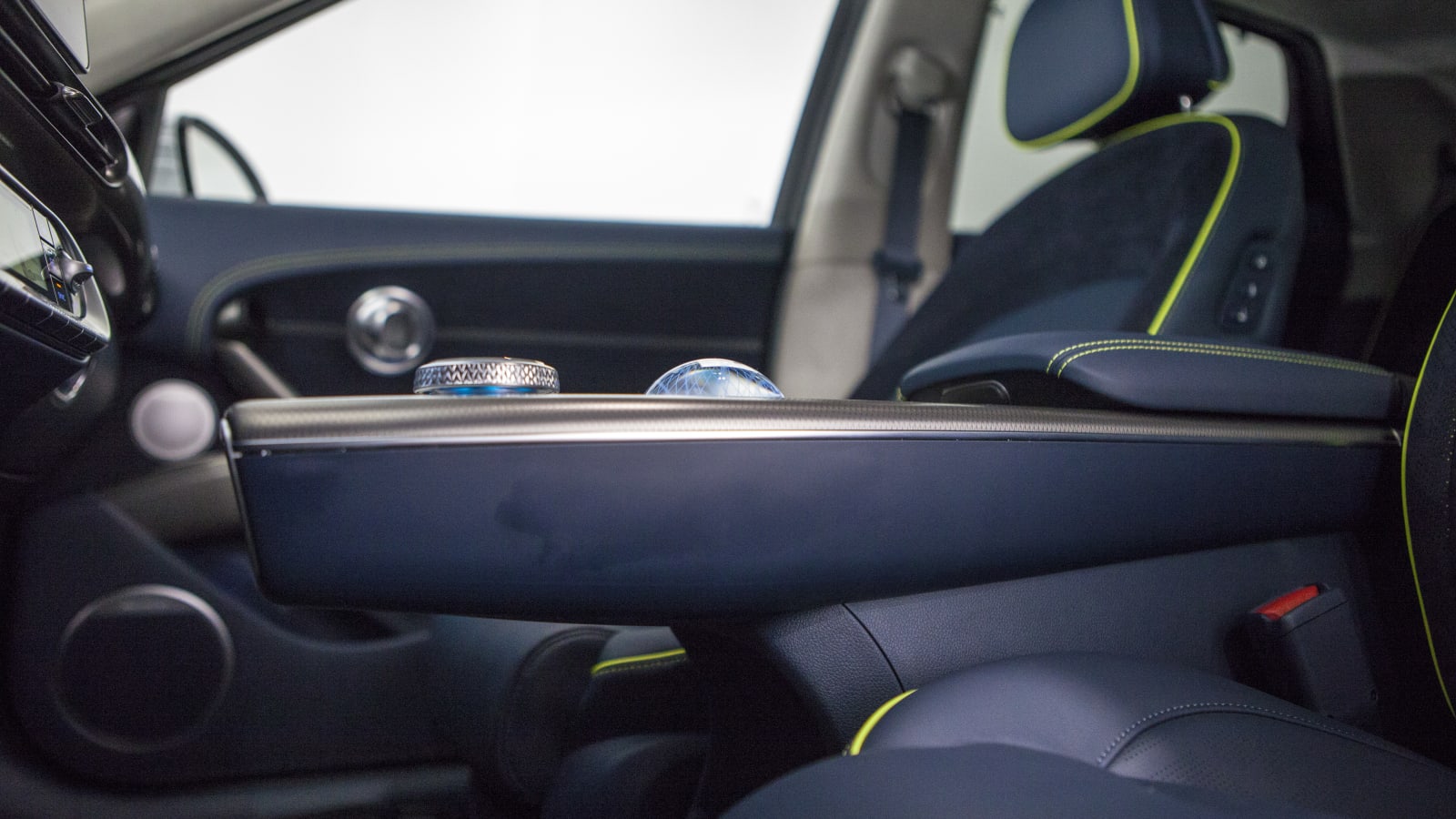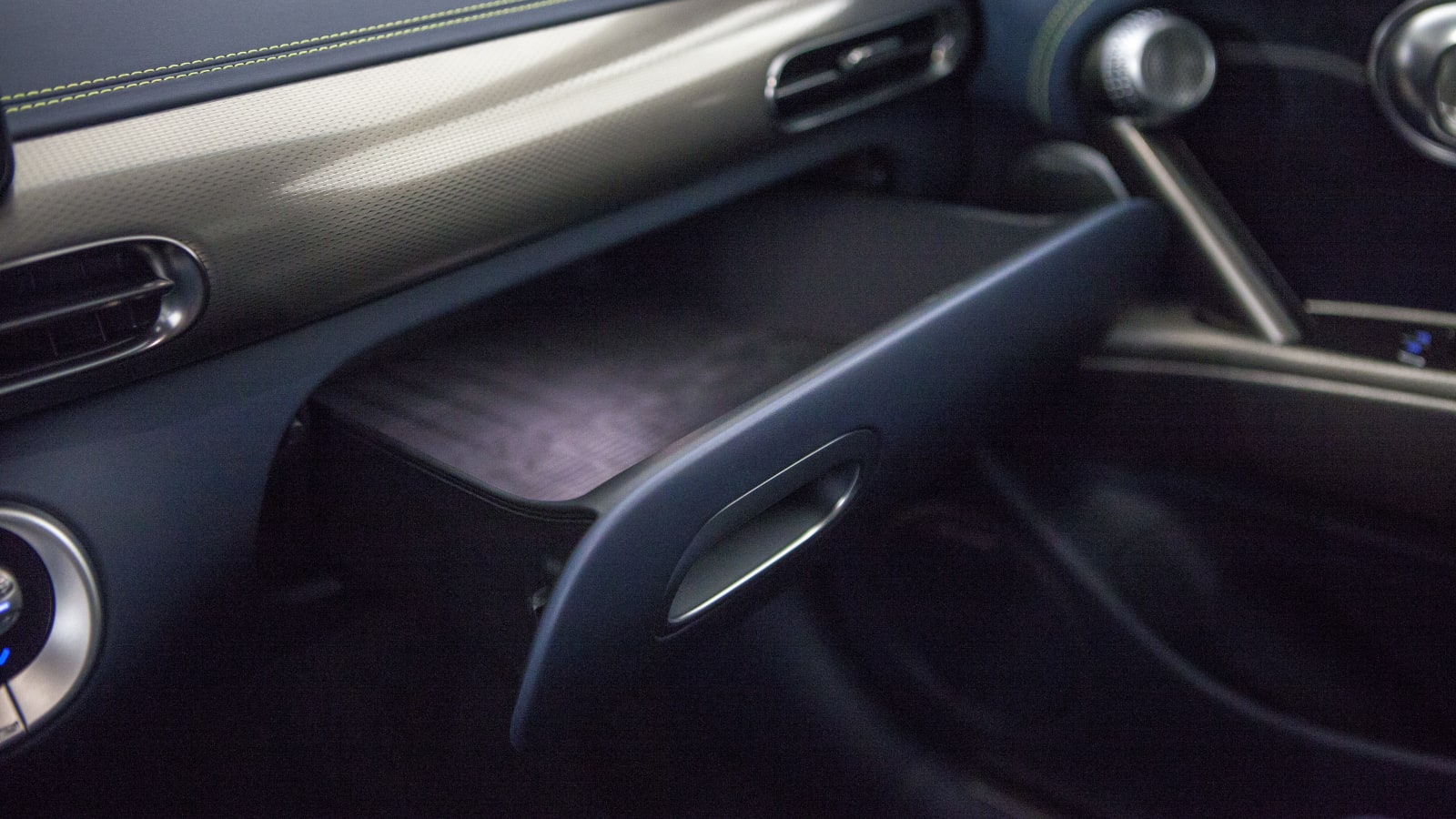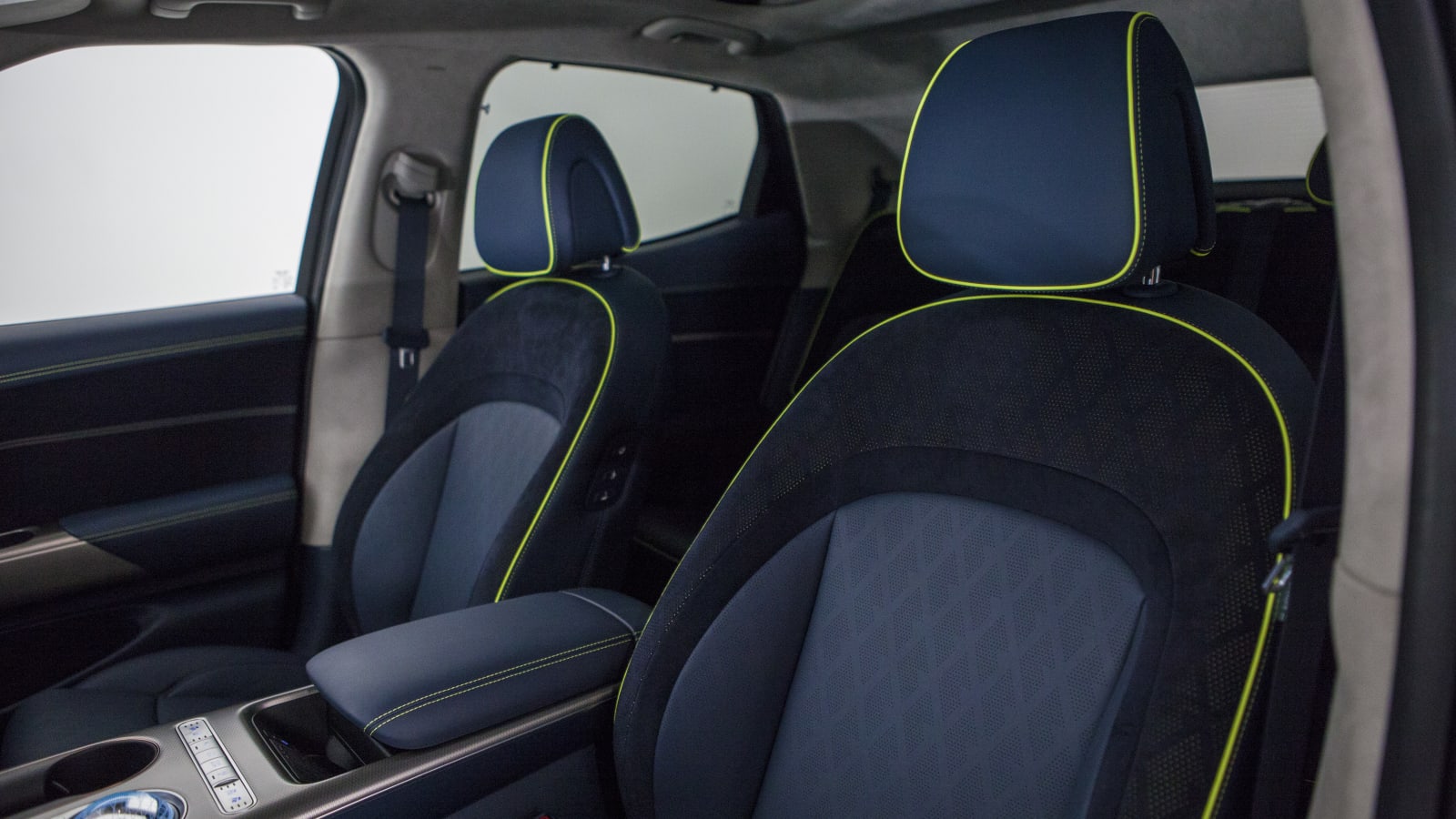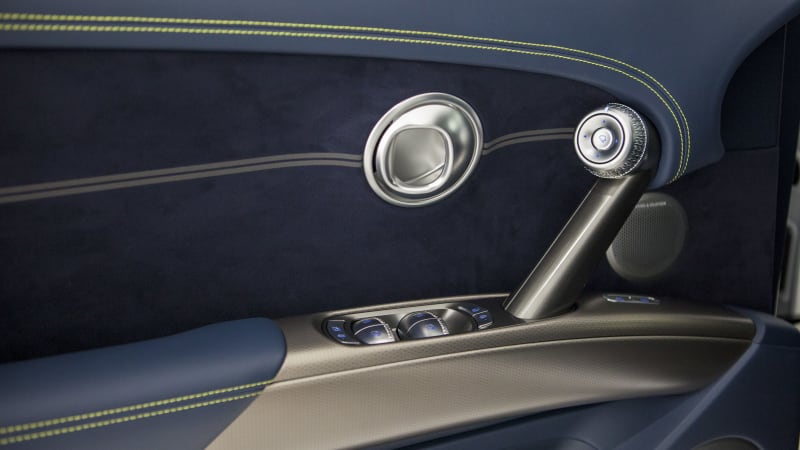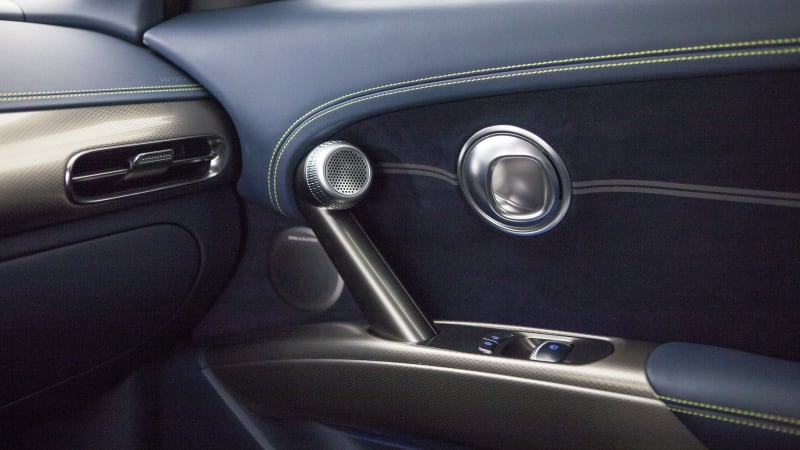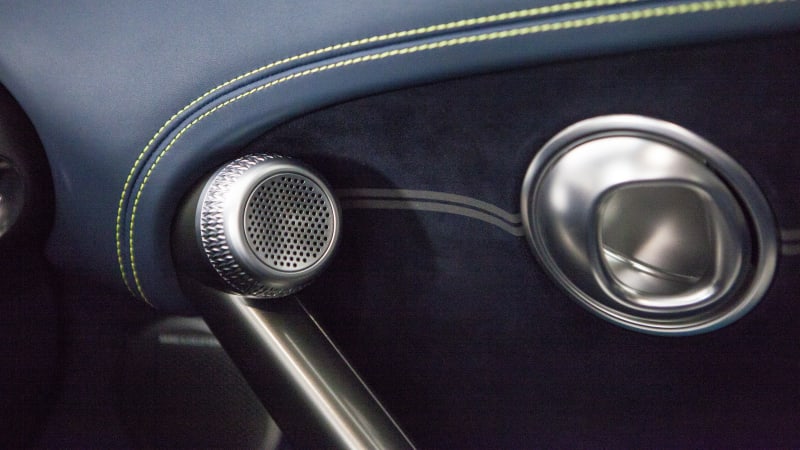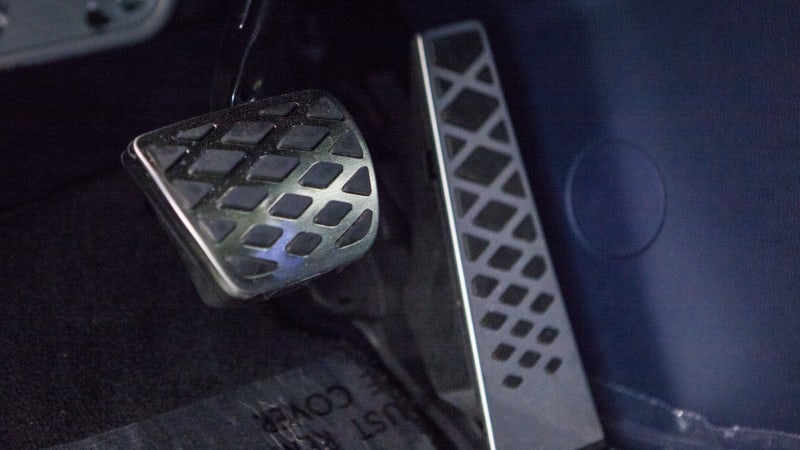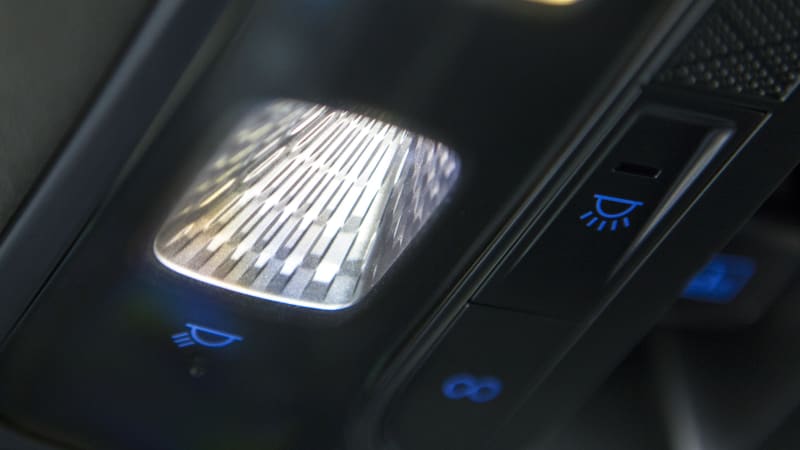The Genesis brand is still trying to distinguish itself, in both the highly competitive luxury marketplace and from its own increasingly upscale cousins at Hyundai and Kia. Being a standout becomes doubly difficult when the car is an electric vehicle built atop a modular skateboard shared with the other Hyundai Group brands. However, in our first peek at the Genesis GV60, the top dog in Hyundai’s trio of E-GMP cars, we found it imbued with an astounding level of differentiation.
There will be no mistaking a GV60 for a Hyundai Ioniq 5 or Kia EV6. Even in areas where other brand-engineered cars may cut a parts bin corner or two — a power mirror adjuster here, a window switch there — the Genesis forges its own path. Not only that, but the Genesis possesses enough cleverness to set itself apart from other luxury makes, period.
Much of this is accomplished with attention to design detail and novel use of technology. Here are some of the finer points that you can’t really appreciate by simply looking at a typical three-quarter view photo.
No Shared Panels
Although all three E-GMP cars have a general five-door hatchback-ish form, there are no shared body panels between them. According to a Genesis spokesperson, teams from each division got the platform, but then the designs split off from there. The GV60 more closely resembles the Kia EV6 than the boxy-retro Hyundai Ioniq 5, but even the rooflines — an area where it’s really hard to disguise a shared unibody — are different.
Other design flourishes include a minimalist side that resists forced character lines, a clamshell hood (still rear-hinged, though) and a rear that puts everything functional (sensors, reverse lights, reflectors, license plate) below the bumper line to keep the upper half clean.
Biometric Authentication
In theory, you don’t ever need a key fob to drive the GV60. A facial recognition camera hidden in the B-pillar can save up to profiles. Like an iPhone, you simply need to walk up to it and a light illuminates to indicate it’s reading your mug. Once you’re verified, the door unlocks.
As a precaution, it requires a second authentication to actually start the car. That comes in the form of a fingerprint sensor on the center console. Of course, a fob can be used if you want your friend to fetch something out of the car for you, but not needing to carry a fob can be useful if, say, you’re headed for a day at the beach. These features will not appear on either the Ioniq 5 or EV6, one of the many ways the Genesis separates itself from them.
Not-identical key fobs
You may not need a key fob, but Genesis still gives you two well-designed ones that aren’t the typical black oblong. They do the same job but why the different colors? No reason, except Genesis designers could make them that way.
Cameras integrated into the design
Most cars nowadays have front and rear cameras, but all too often they’re enclosed in large black boxes that disrupt the design of the car, particularly at the front. On the GV60, the cameras are hidden in tasteful crest shapes, a design cue that doesn’t look out of place because it’s repeated throughout the car. The rear camera is part of a spoiler whose entire trailing edge is the main brake light.
Real metal badge
The GV60 has an old-school metal wing logo on its nose. It’s cool to the touch and gives off a sense of quality that’s compounded by the guilloché pattern at its center. The brand emblem should be a carmaker’s badge of honor, so why do so many use a cheap hunk of plastic?
Thoughtful Design, Part 1
The GV60 abounds with design that illustrates an attention to detail. Sometimes it seems like designers are out of ideas, especially when variations on the Hoffmeister kink or floating roof C-pillar spring up on every new reveal. It’s hard to come up with something new, but the GV60 has a clever lightning bolt design on its rearmost pillar. It simultaneously hints at the electric powertrain beneath and is part of a chrome strip that begins at the rear spoiler, wraps around the top edge of the windshield, and ends at the rear spoiler’s on the opposite side.
Other musings: The door to the charging port is push-activated, but has two subtle lines that indicate where to press while other cars make you hunt for the magic spot; also, the wheels are dazzling, even if they do look hard to clean.
Modular Headlamps
The GV60 continues with the quad lamp design that’s been a Genesis trademark ever since the stunning Essentia concept. However, in this case the headlights are modular, meaning parts of the headlight, like the lens or one of the projectors, can be replaced. This not only limits repair costs should the light get damaged, but reduces waste as well, which is part of the EV’s ecologically conscious philosophy.
Crystal Sphere Shifter
The centerpiece of the GV60’s interior is the Crystal Sphere shifter (we were admittedly completely wrong and not entirely informed about the extent of its function). When parked, a glowing glass ball with an intricate lattice pattern sits on the center console. The lighting within can be customized with dozens of preset colors (or a hue of your own choosing) to match the ambient lighting on the doors and dash. When you’ve authenticated yourself as the driver, the orb flips over to reveal an ornate rotary gear selector. It frankly seems like a party trick that gives the car an extra bit of wow, but Genesis claims it’s actually a safety feature because you’ll clearly know when the car is actually on. That can be an issue in a car without an internal combustion engine, but any claim that a fanciful electronic shifter is a safety feature does seem dubious.
The Center Console
The center console itself is a floating design that juts out like a pier. Not too long ago this would’ve been a concept car styling cue. What’s a bit more clever is that there’s a pass-through storage area below it that rear seat passengers can access too.
Glove Drawer
Instead of a glove box, the GV60 has a glove drawer. This provides a much larger in-dash compartment than a typical box, and it has a flat bottom so things don’t get jumbled around as soon as you close it. The opening and closing motion wasn’t as fluid as it could be, but this car is pre-pre-production, essentially hand-built in a lab. We expect it’ll work better in production cars.
Different colors and eco-friendly materials
The interior also comes in some sharp colors beyond your typical black or tan options. The car we examined had beautiful dark blue upholstery with a fun electric yellow contrast piping and stitching. Some interior bits use 15% recycled PET plastic and fishnets, while leatherette is up to 10% corn. Leather upholstery uses linseed oil to process instead of the traditional bath of harsh chemicals.
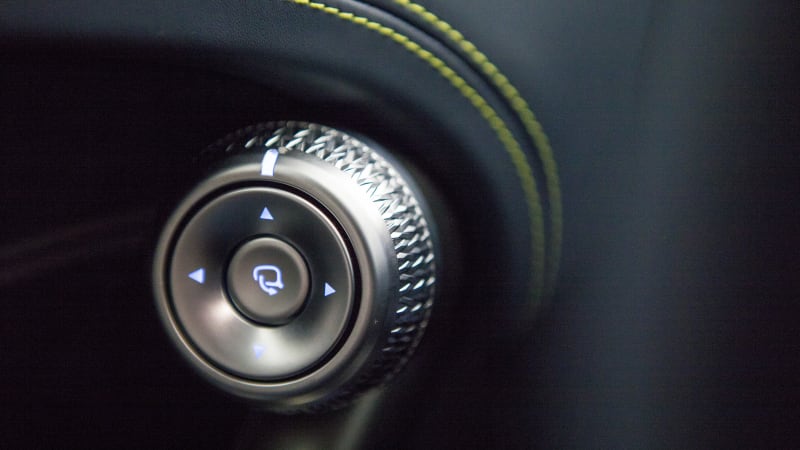
Thoughtful Design, Part 2
The attention to detail continues on the inside. For example, on the driver’s door the mirror adjustment is located in a nicely sculpted chrome circle by the pull. For symmetry’s sake there’s a similar circle on the passenger side, but of course there’s no need for a mirror adjustment there. Instead, the circle is a cap that unscrews to reveal a cubby hole for a refillable scent dispenser.
But what really sets the GV60’s cabin apart is the fact that every surface, no matter how insignificant, is permeated by design. The dome light housing isn’t just your run-of-the-mill bezel; there’s a pattern to it. An overhead speaker grille features a matrix pattern that’s repeated on everything from the pedals to the seats, giving the interior a cohesive feel. The volume control wheel, the window switches, even the vent tabs that are usually simple flat pieces of plastic, are all intricately textured, giving the entire cabin an upscale feel. We should be clear, too, that none of these pieces are found in the also-impressive GV70 or GV80.
This is the kind of artistry typically reserved on a much pricier class of car, like a Bentley. As it turns out, Genesis’ head of design, Sangyup Lee, is an ex-Bentley man. So too is Genesis Chief Creative Officer Luc Donckervolke. The cost to press out a plastic dial with a plain lined edge versus one with an elegant diamond texture seem likely to be similar. The latter just takes a bit of extra effort to design. However, these details give the impression that designers questioned every detail of the car, and in total a pleasant environment to be in and one that feels truly premium.

